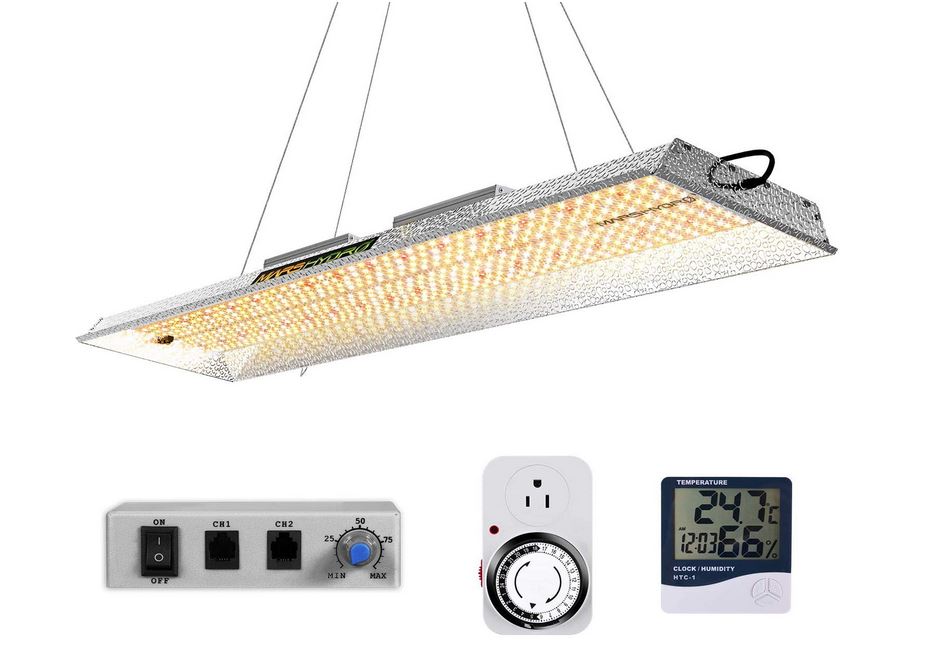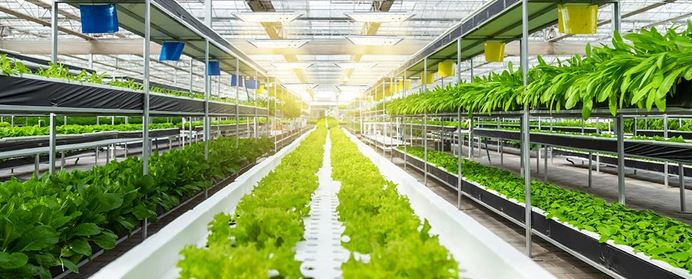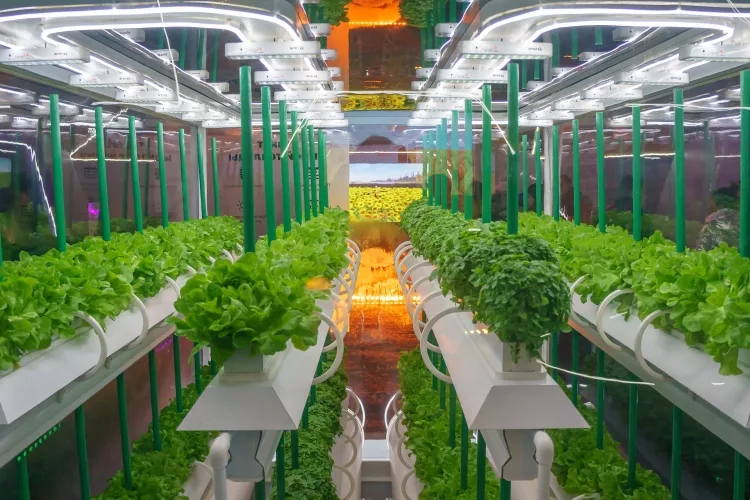Grow Light Glossary – The Terms You MUST Know!
by Kevin
Contents
A through F : Grow Light Glossary & Terms List
AMPERE (AMP): The unit used to measure the strength of an electric current.
ARC: The luminous discharge of electricity between two electrodes in H.I.D. lighting.
ARC TUBE: The enclosure which contains the luminous gases and also houses the arc.
BALLAST: An auxiliary piece of equipment designed to start and to properly control the flow of power to gas discharge light sources such as fluorescent and high intensity discharge lamps. In metal halide systems, it is composed of the transformer, capacitor and connecting wiring; sodium systems require and igniter in addition to the transformer and capacitor.

BU: An industry code indication that the bulb is to be operated only in a base up position.
BULB: The glass outer envelope component of and H.I.D. lamp which protects the arc tube.
CANDELAS: A unit of luminous intensity equal to 1/60 of the luminous intensity per square centimeter of a blackbody radiating at the temperature of solidification of platinum (2,046°K). Also called candle.
CANDLEPOWER (CP): The luminous intensity of a light source as expressed in candelas.
CAPACITOR: An electronic device that can store electrical charge. The capacitor is one the main components of an H.I.D. lighting ballast. Because they can store a very strong electrical charge, capacitors can be very dangerous to someone who is unaware of this fact and opens the ballast in order to examine or repair it. If one does not know how to safely discharge the stored electricity, one should allow a trained technician to do all ballast repairs.
COLOR RENDERING INDEX (CRI): Indicates the color closest to the sun as available in the lamp. The sun = 100.
COLOR TEMPERATURE or KELVIN TEMPERATURE (K): The unit of measurement to express the color (spectrum) of light emitted by a lamp; the absolute temperature of a blackbody radiator having a chromaticity equal to that of the light source.
FIXTURE: The electrical fitting used to contain the electric components of a lighting system.
FLUORESCENT LAMP: A discharge lamp in which a phosphor coating transforms ultraviolet energy into visible light. Fluorescent lamps are good for starting seedling and rooting cuttings but do not have enough intensity to sustain aggressive growth in plants in the later stages of life and are not efficient enough in their conversion of electrical power to lumens of light output.
This type of light is perfect for starts (cuttings/clones) and seedlings but is a poor light source for growth and flowering, with exception of some low-light plants such a African violets (check the lighting requirements of your plants before choosing a grow light), because of low lumen output.

FOOTCANDLE: A standard measurement of light intensity, representing the amount of illumination on a surface on foot square on which there is a uniformly distributed flux of one lumen. More simply, one footcandle of illumination is equal to the light emitted by one candle at a distance of one foot.
FREQUENCY: The number of waves of cycles of electromagnetic radiation per second, usually measured in Hertz (Hz).
H through P : Grow Light Glossary & Terms List
HALIDE: See Metal Halide Lamp
HALOGEN LAMP: A short name for the tungsten-halogen lamp. Halogen lamps are high pressure incandescent lamps containing halogen gases such as iodine or bromine which allow the filaments to be operated at higher temperatures and higher efficiencies. While excellent for home lighting and similar applications, halogen lamps are not effective or efficient as grow lights due to their limited spectrum and high operating temperatures.
H.I.D or HID: The popular acronym for High Intensity Discharge.
HIGH PRESSURE SODIUM LAMP: High pressure sodium lamps operate by igniting sodium, mercury and xenon gases within a sealed ceramic arc tube. Sodium lamps emit light energy in the yellow/red/orange regions of the spectrum; the red spectrum stimulates flowering and fruit production. Many indoor gardeners switch to sodium lamps when it is time to induce flowering or fruiting of their plants.
HOOD: The reflective cover used in conjunction with and HID lamp. The more reflectivity a hood can provide, the more effective it is.
HOR: An industry code indicating that the bulb is to be operated in a horizontal position.
HOT SPOT: The are immediately under an HID lamp where the light intensity is strongest. Hot spots cause uneven growth, but can be remedied by using light movers.
HOT START TIME: The length of time required to bring an HID lamp to 90% light output after a short power interruption.
IGNITER: A component of the ballast necessary for the starting of the bulb in sodium systems.
INTENSITY: A term referring to the magnitude of light energy per unit. Light intensity diminished evenly as you get farther from the source.
KELVIN TEMPERATURE (K): The unit of measurement used to measure the color (spectrum) of light emitted by a lamp; the absolute temperature of a blackbody radiator having a chromaticity equal to that of the light source. A standard clear metal halide HID lamp has an average Kelvin temperature rating of 4,000K (4K).
KILOWATT HOUR (kWh): A measure of electric energy. A kilowatt hour is equal to 1,000 watts of power used over a period of one hour.
LAMP: An electrically energized source of light, commonly called a bulb or tube.
LAMP LIFE: A measure of lamp performance, as measured in median hours of burning time under ANSI test conditions.
LUMEN: A measurement of light output; refers to the amount of light emitted by one foot candle that falls on one square foot of surface located at a distance of one foot from the candle.
METAL HALIDE LAMP: A high intensity discharge lamp in which the light is produced by arcing the electricity through a mixture of metal halides. The light produced by metal halide lamps is in the white-blue spectrum which encourages vegetative (leaf) growth and "bushiness" while discouraging upward growth. This is the better bulb to use in the first, vegetative phase of plant growth.
PHOTOPERIOD: The relative periods of light and dark within a 24-hour period. Also referred to as day length.
PHOTOSYNTHESIS: The growth process by which plants build chemical compounds (carbohydrates) from light, energy, water and CO2 (carbon dioxide).
PHOTOTROPISM: The gravitation of a plant part toward a light source.
R through W : Grow Light Glossary & Terms List

REFLECTOR: The term sometimes used to refer to the reflective hood of an HID lamp.
REFLECTIVITY: The measure of the reflective quality of a surface; the relative ability of a given surface to reflect away from it without absorbing, diffusing or otherwise compromising the light's quality, intensity or spectrum.
SOCKET: The threaded, wired receptacle into which an HID bulb screws.
TRANSFORMER: The component in the ballast that transforms electric current from one voltage to another.
U (UNIVERSAL): An industry code indicating that the bulb can be operated in any position; horizontally, vertically (base-up) or any other. A bulb with this designation is not as efficient as a horizontal bulb.
UNDERWRITERS LABORATORIES (UL): A private organization which tests and lists electrical and other equipment for electrical and fire safety according to recognized UL and other standards. A UL listing is not indicative of overall performance.
WATT (W): A unit used to measure electric power. One watt equals one joule per second.
Thoughts on "Grow Light Glossary – The Terms You MUST Know!"
 |
 |
 |
 |
Hydroponics Tips